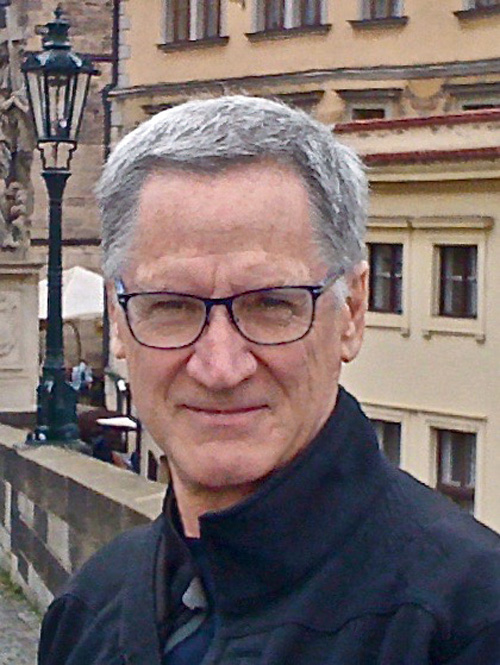By Catarina Kidd, AICP
 Martin Carver, AICP, is Managing Partner of ZeroCity, LLC in Santa Cruz, California. He holds a master of city and regional planning from Cornell University and a BA in environmental studies /politics from UC Santa Cruz. As a volunteer, he has served as a board member for Tierra Pacifica Charter School, Insight Santa Cruz, and Bloom of the Present.
Martin Carver, AICP, is Managing Partner of ZeroCity, LLC in Santa Cruz, California. He holds a master of city and regional planning from Cornell University and a BA in environmental studies /politics from UC Santa Cruz. As a volunteer, he has served as a board member for Tierra Pacifica Charter School, Insight Santa Cruz, and Bloom of the Present.
What is your professional focus?
We work with municipalities, school districts, and universities to achieve net zero greenhouse gas emissions using community-scale renewable energy projects. I work with a partner to combine comprehensive city and climate action planning with implementation of energy projects. The time has come to think bigger about collective efforts with public/private partnerships to increase renewable energy production and move beyond the modest “one-rooftop-at-a-time” approach.
What led you to this work?
Around 2000, I began consulting with my own firm, Coastplans. This was mostly general plan work, advance planning, housing elements, and CEQA documents. In 2015, as a result of the recession’s impact on my firm and my clients, my private practice was reinvented with a partner, and became “ZeroCity, LLC.” The firm offers energy planning, which is what I have focused on for the last five years.
What are the concepts in this particular specialty?
We saw a need for local cities to gain a foothold in energy development and community choice aggregation. In the Central Coast area, I served on the formation committee of Monterey Bay Community Power. Even before PG&E’s power safety shutoffs started, we thought the technology and economics were there for local microgrids with which local cities could sustainably provide more reliable and cheaper power.
What is a microgrid?
Essentially, a combination of solar, batteries, and wind power feeds into your own poles and wires, and not into PG&E transmission lines. There could even be room for building one or two additional wind turbines to feed into the microgrid, and opportunities for nearby landfills to provide gas. The prices for power are set by how much it costs to produce energy. To be competitive, microgrids cannot charge more than PG&E.
Most cities have opportunities in terms of public rights-of-way and excess land around water treatment plants and other facilities that can potentially host microgrids. The microgrids form a basis for a new municipal finance, a new way for cities to fund operations.
Any recent examples?
I put together a team and am currently working on a plan to provide power to major customers in the Gonzales Industrial Park, which hosts tenants such as Del Monte Foods, Taylor Foods, and Constellation Wines. These are multi-billion dollar companies with large energy needs. Microgrids are an approach that makes sense and sets them on a path of sustainability. We are now in the final stages of negotiating a public-private partnership, and the key factor for viability, private money, has come to the table. With Phase 1 producing as much as 80 Gigawatt hours (GWh) a year, it would be one of the largest microgrids in California.
Where can we learn more about energy sustainability?
Over the past several years, I have written several papers about the foundational ideas, recent developments, and analysis of microgrid programs. They can be found here: http://zero.city/news.
What advice do you have for new or mid-career planners?
Think about what draws you in. I always gravitated to long-range planning in private consulting. I started my post-graduate planning career in Sacramento at Mintier-Harnish where I learned about housing elements, general plans, and CEQA. I also worked for the Santa Cruz County Regional Transportation Commission and the Monterey County Resource Management Agency’s Long-Range Planning Team. In addition, I worked on the Marine Science Campus Coastal Long-Range Development Plan, the Science Hill Master Plan, and the Silicon Valley Center/NASA Ames Campus Master Plan, all through the University of California. All of these were rewarding experiences.
It’s good to do both public and private sector work — it rounds you out. The idea that you just stay in one organization or job for 20 years doesn’t fly anymore. Truthfully, I never did that well in public sector offices and their politics. I always wanted to focus on the work, and consulting matched with my personality and work style. You should consider those factors when deciding your path.
Talk about your experience dealing with recession and business cycles.
It’s important to understand the economics of planning as a business. When the 2008 recession began, it became obvious that housing markets drive city planning. Not entirely, but a lot of it. So when the bottom drops out, there are no consulting jobs, no agency planner jobs. I was lucky because I had a large general plan project underway through 2011 that kept me whole for that time.
After 2012, there was no work for the year, and it was a pretty tough time for me and for many planners, public and private. I took on temporary work with the County of Monterey for a few years. In 2015, I started getting calls from former clients. Since then, there has been a lot work; however, there is always the possibility of a downturn. Be sure to have enough resources and savings to stay afloat during the hard times, and know the lean times will pass.
Interviewer Catarina Kidd, AICP, is senior development manager at FivePoint and a guest writer for Northern News. All interviews are edited.

